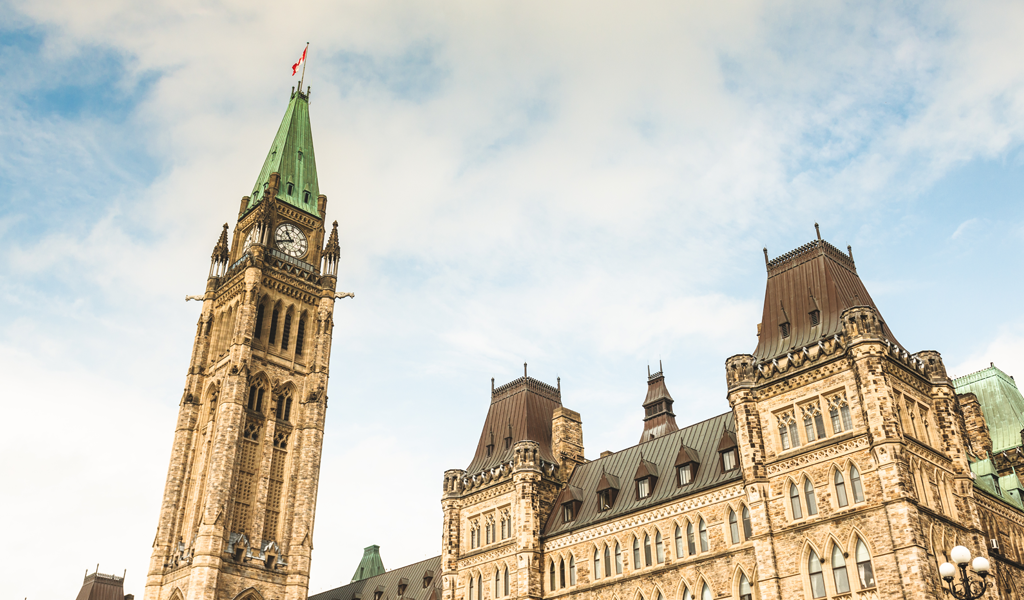Undoubtedly, last week was pretty challenging for you. It was pretty challenging for us. Our focus was first and foremost on establishing the right frameworks for preserving the health and safety of our staff, as well as testing our business continuity plans and procedures. There is nothing like an actual crisis to test assumptions about how well those plans are built – and, admittedly, we’ve learned a few lessons along the way.
Despite the negative environment, it is useful to reflect on how the business and not-for-profit community seemed to coalesce around the need to contribute positively to this national, indeed global, crisis over the past few days. There is more positive news – China seems to have turned a corner, South Korea has set an example for a public-health response and at the time of writing, researchers at Canada’s Sunnybrook Health Sciences Centre have managed to isolate the novel coronavirus, which will only help accelerate the scientific community’s capacity to develop anti-virals and treatments.
But, the evidence suggests that it will only get more challenging for all of us in the coming weeks.
Our attention is turning to our clients and how we might help them (even if in a small way) navigate the immediate short to medium term. This may become a new normal in terms of how we operate for the foreseeable future. But, we still have businesses to run, employees to pay and clients to serve. What will help us move forward?
At Welch, we have a variety of backgrounds and expertise in the firm that can help answer that question, so, in the spirit of providing something that is useful, we are providing some initial thoughts for you to consider in this white paper.
Economic conditions and the government’s response
Essentially, we are looking at a supply and demand shock to the global economy. This is likely unprecedented, with perhaps the closest analogy being the 1970s oil crises. The odds of a global recession are fairly high – and with personal debt levels persistently remaining at record levels given cheap access to credit, there is some doubt over the resiliency of the average consumer to weather the storm. Those at the margins could end up suffering without broad intervention.
Demand is in rapid decline in the tourism and hospitality industries. This will reverberate throughout the economy. At the same time, global supply chains have been disrupted and, when people simply can’t show up to work, labour also becomes scarcer.
The tricky part will be the fact that despite the best efforts of central banks and governments, nothing other than an aggressive public-health response will stop or slow people from becoming ill or pulling back for fear of becoming ill. Monetary policy response may be muted as a result of this dynamic.
In our view, liquidity is priority number one at the macro and micro levels.
In that regard, on Friday, a number of steps that are very reminiscent of the 2008 global credit crisis were taken by the Government of Canada to shore up financial markets and preserve liquidity. We see these steps as being extremely positive, if only to shore up sentiment. Some highlights:
1. Emergency policy rate cut – the Bank of Canada has reduced the overnight rate target by another 50 basis points to 0.75%, this following a 50-basis point reduction on March 4.
2. The domestic stability buffer for domestic banks has been reduced to 1% of assets from 2.25% of assets. This will likely not receive too much attention in the media, but, in practical terms, it has the impact of unlocking about $300 billion (CAD) of additional lending capacity that Banks would have normally had to keep in reserve. It is a significant move given very risk-averse regulators in this country. This will facilitate new lending, and likely make it easier for Banks to re-work existing loans to the benefit of business and individuals. At the very least, it will permit Banks to assume losses without impacting lending.
3. A re-launch of the Business Credit Availability Program (BCAP) run through Business Development Bank of Canada (BDC) and Export Development Canada (EDC), which we last saw as part of Canada’s Economic Action Plan following the global credit crisis. This will provide financing solutions, possibly useful in concert with existing private sector lenders you are already working with. This may include credit insurance solutions. The BCAP is pegged at $10 billion, and in some cases could provide you access to funds in as little as 48 hours. Undoubtedly, this will help shore up working capital and keep business moving.
4. The Bank of Canada will ramp-up a number of its standing liquidity facilities and operations, including its Government of Canada bond buy-back program to keep the market in sovereign debt moving.
You can draw a direct line between these moves and many that were made in 2008, and just like 2008, things are moving really fast.
Announcements on Friday have not necessarily had a chance to be fully reflected in the market. It is important to note that Sunday saw the Federal Reserve in the United States decrease its benchmark interest rate to zero and will start a $700 billion quantitative easing program which may increase pressure to reduce rates further in Canada through emergency rate cuts. Late Sunday, the Bank of Canada also announced joint actions with global central banks to improve US dollar liquidity through cheaper access to standing swap facilities.
The federal government, Bank of Canada and in particular the Minister of Finance, have additional powers and authorities that can also be drawn in terms of direct intervention in financial markets or to prop-up entities or industries. This can include quantitative easing if deemed necessary – Canada has yet to see the European phenomenon of negative interest rates, loathe as the Governor may be to see them.
Fiscal stimulus
The Government has said that it will announce a fiscal stimulus package as early as today. With the indefinite deferral of the federal budget, Cabinet met on Sunday to review options. We obviously don’t know exactly what this package will entail, but have some views on what it could look like.
Our view is that the best measures will be those that impact individuals and business directly, and do so quickly without a significant amount of bureaucratic intervention.
There are a number of ways this could happen – payroll tax reductions or holidays (while preserving the social safety net) will provide cash resources to businesses and individuals and do so with immediate and regular effect. Extending tax deadlines or introducing administrative relief in terms of interest or late filing penalties will also reduce cash-flow pressures in an uncertain environment and ratchet down distractions for business-owners that are trying to keep their house in order. These also improve liquidity.
As mentioned, large swaths of the population will either be unable to work due to health reasons or will be restricted from going to work due to quarantine or social-distancing measures – we see this already in Ontario, for example. Direct cash payments or the simple backstopping of sick leave for those in certain industries will mitigate these impacts, especially those who do not have the luxury of working from home or cannot secure child care.
It will be interesting to see how lenders, the Chartered Banks in particular, approach similar obligations with their clientele in real terms given that they have made a commitment to the government to support business and individuals through this crisis.
We do not see additional investment in infrastructure as a big play, given that a significant amount of capital from previous initiatives remains undeployed, but, it is a possibility from a market sentiment perspective and will improve the demand-side of the economy. There are economic regions in the country, Alberta in particular, that could use a special boost so it may be targeted in that manner. Targeted industry relief could also be on tap, in particular for domestic airlines and tourism, hospitality and entertainment. As you will recall, the residual impacts of the global credit crisis found the Government of Canada as part owner of General Motors and Chrysler, so this type of assistance is not unprecedented.
Most importantly, look for increases in federal transfers to provinces either under the banner of the Canada Health Transfer or as special one-time transfers. Hospitals and public-health authorities will need money and resources to keep going. The public-health response is what helps slow or stop this and we can’t see how an investment of some magnitude isn’t in the cards. Investments like this admittedly won’t create more doctors or nurses, but, confidence in the health system is critical to maintain an orderly public response. Creative options such as incentivizing industry to move production capacity into healthcare equipment (for example, respirators) could also be seen.
Announcements this week will likely become the proxy for the federal budget. Announcements with respect to stimulus provided through the income tax system could also be seen this week. If not, they may be deferred until there is more certainty on a federal budget date.
Political climate
One thing we see as critical is that the political class coalesce in the same way businesses and citizens have. The reality is that Canada is well-positioned fiscally to react to this crisis and has a number of road-tested tools to increase, preserve and maintain orderly functioning of financial markets. Those in charge of the response at Canada’s central bank, the Department of Finance and OSFI were, for the most part, there in 2008. The muscle memory is there to react accordingly and you are in good hands in that regard.
Although there are undoubtedly challenges ahead, perpetuating notions that “the cupboard is bare” is not, in our view, a helpful political angle to take. It might even have negative repercussions.
The economy has admittedly taken a lot of hits recently, and businesses have suffered. There will be a time to revisit the past several years of deficit spending and economic policy and its longer-term impact, but, we do not think that time is now.
Practical steps
As early as this week, we will have more wholesome understanding of the combined monetary and fiscal stimulus that is on offer.
Our view is that you should be considering your liquid resources in the context of the significant steps that the central banks and Government of Canada have taken to ease credit conditions. Credit is less expensive than it has been in several years, so taking educated steps to build up the necessary liquidity buffers in your business is likely a prudent action right now. This will keep things moving and stave off disorderly or blunt responses to the situation that are difficult to recover from. Keeping business moving will allow for recovery.
Test your business continuity plans – If you have a business that can function remotely, have you performed live tests of what impacts your entire workforce connecting will have?
Have you identified operational and organizational linchpins (for example, your IT operation) and taken steps to ensure there are redundancies built in to your organization such that if one key person becomes unable to work, you have the right resources to bring things back up to a state of normalcy.
Have you modeled cash flow requirements over the next three to six-month periods to understand what levels of reserve you have and what you might need, as well as what might be curtailed to preserve your liquidity? Have you performed sensitivity analysis on the impact of this model if your customer payment cycles extend? You will want to begin discussions with clients and suppliers now on impact.
Have you considered tracking direct or indirect costs associated with the crisis? This could help in terms of any possible future programs that provide financial assistance or simply in terms of understanding the resiliency of your business.
What are we doing at Welch?
The situation is evolving. By the time you’re reading this, it may be out of date.
We are constantly evaluating our response. Our priority is the health and safety of our staff and the best interest of our clients. We will continue to contribute to mitigating the spread of the virus.
We will also be investing time over the coming days to understand how any stimulus programs will work such that we can help you avail yourselves of the tools and programs that are on offer.
Most importantly, we are happy to just pick up the phone and talk to you to strategize about what might make the most sense in your situation. It’s always helpful for you to have another perspective – and, it’s helpful for us to have your perspective as well. The more data the better.
We hope this was of some assistance to you in the first phases of Canada’s response to this situation. We will continue to provide insights as best as possible as the situation clarifies.












